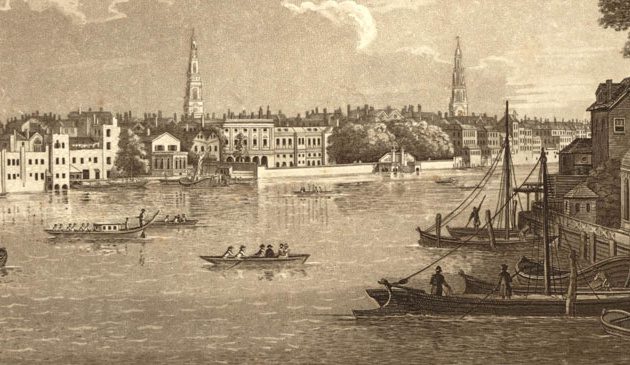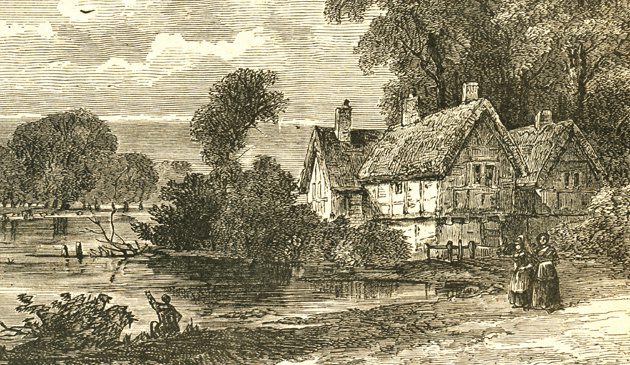Samuel Pepys

Samuel Pepys, taken from a portrait by Sir Godfrey Kneller painted in 1689 and now part of the National Maritime Museum’s collection at Greenwich.
Some of the most interesting records of mid-17th century London are the diaries written by Samuel Pepys during the years 1660 to 1669. He was born into humble circumstances in the city yet rose to become one of the country’s most senior, able and unusually conscientious civil servants who helped create the modern navy. A cultured man, he befriended the great intellectuals of his age and was the confidant of two successive kings.
Pepys was born in February 1633 above his father’s shop in Salisbury Court, a lane that ran between Fleet Street and the Thames and was baptised in the nearby St. Bride’s church. His father was a tailor and mother a former laundress. Both were of puritan faith and his mother quite extreme in her beliefs. During the Civil War the teenage Samuel witnessed several of the great events of the time. In the summer of 1647 he watched as the New Model Army marched into London and in January 1649, as a fifteen year old boy, was in the crowd in Whitehall to witness the execution of King Charles.
Pepys studied at the eminent cathedral school at St. Paul’s where he was taught about the Bible and classical literature, giving him a love of books for the rest of his life. From there he won a scholarship to Cambridge University. Graduating in 1654 he returned to London where he soon married a 15-year old girl, Elizabeth, a Huguenot immigrant, at St. Margaret’s church at Westminster.
After completing his studies Pepys found work as assistant to a relation, Edward Montagu, a member of the Admiralty Committee of the Parliamentary navy, which brought with it a small apartment at Whitehall for Samuel and his wife. That was followed by a position in the Exchequer’s office, which was headed by George Downing (after whom Downing Street is named).
As London descended into chaos in the dying days of the Commonwealth government at the end of 1659 Pepys decided to begin writing a diary. At university he had learnt a system of shorthand known as Tachygraphy with which he was able to accurately record lectures and sermons. It was by that method that he wrote his diaries except for names, which are written in long-hand. He continued until 31st May 1669, describing in candid detail his life, thoughts and the world around him.


